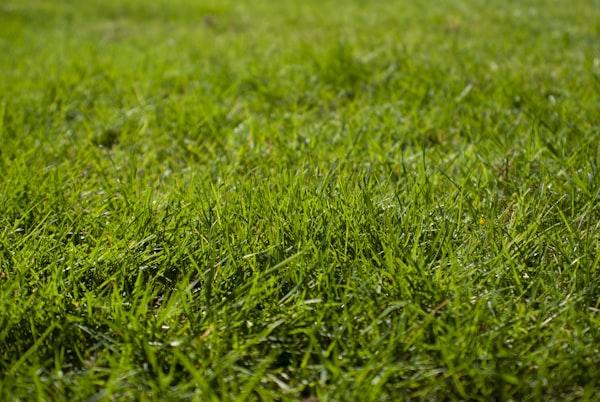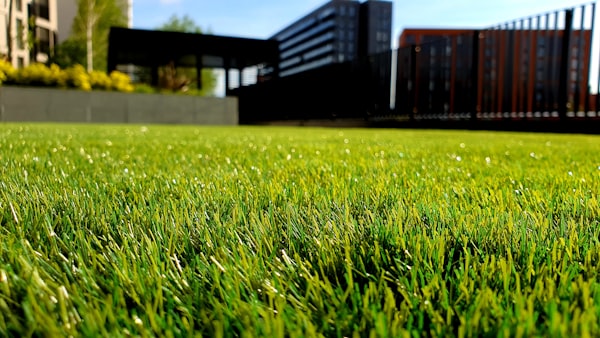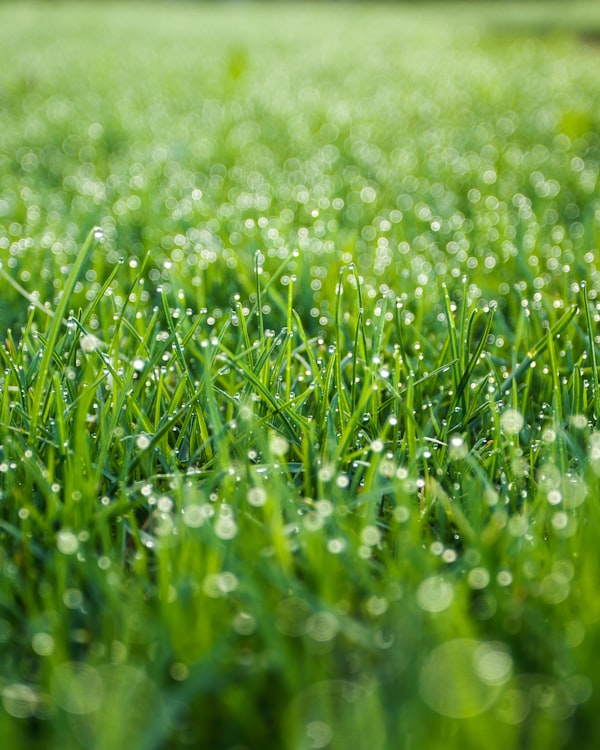The Best Time to Fertilize Zoysia Grass
When it comes to fertilizing zoysia grass, timing is crucial for ensuring optimal growth and health. Understanding the growth patterns of zoysia grass and its active growth periods can help us determine the best time to fertilize.
Understanding Zoysia Grass Growth
Zoysia grass is a warm-season grass that thrives in regions with hot summers and mild winters, such as Alabama, Florida, and Georgia (Terra Garden Solutions). This grass variant exhibits peak growth during the warmer months, when temperatures are consistently above 70°F (21°C).
Timing is Everything: Late Spring to Early Summer
For zoysia grass, the best time to fertilize is during the late spring to early summer period, when the grass is actively growing and in need of essential nutrients for its optimal health. This usually falls between May and June, depending on your specific location and climate.
Fertilizing during this period ensures that the grass can utilize the nutrients effectively, promoting vigorous growth and a lush, green lawn. It's important to avoid fertilizing too late in the growing season, as this can lead to excessive growth that may not have enough time to harden off before the first frost (The Spruce).
The Importance of Active Growth Periods
Fertilizing zoysia grass during its active growth periods is vital for providing the necessary nutrients that support healthy turf development. During the late spring to early summer, zoysia grass is actively photosynthesizing and undergoing cell division, making it highly receptive to fertilizer applications.
By fertilizing at the right time, you can help your zoysia grass develop a robust root system, resist weed invasion, and withstand environmental stressors. This timing ensures that the grass receives nutrients when it needs them the most, leading to a dense and vibrant lawn.
To determine the exact timing for fertilizing zoysia grass in your specific region, it's helpful to consult local resources or university extension services. They can provide valuable insights tailored to your area's climate and growing conditions. For example, in South Carolina, the best time to fertilize zoysia grass is in late spring after the last average frost date and when the grass is beginning to green up, typically around late April (Clemson University).
By understanding the growth patterns of zoysia grass and fertilizing during its active growth periods in late spring to early summer, you can give your lawn the nutrients it needs for lush, healthy growth. Remember to choose the appropriate fertilizer formulation and follow recommended application rates to ensure the best results.
Choosing the Right Fertilizer for Zoysia Grass
When it comes to selecting the best fertilizer for Zoysia grass, understanding the nutrient requirements of this grass variety is essential. Proper fertilization plays a crucial role in maintaining the health and vibrancy of your Zoysia lawn. In this section, we'll explore the nutrient requirements, differences between slow-release and quick-release fertilizers, and recommended fertilizer formulations for Zoysia grass.
Understanding Nutrient Requirements
Zoysia grass has specific nutrient requirements that need to be met for optimal growth and development. The primary nutrients needed by Zoysia grass include nitrogen (N), phosphorus (P), and potassium (K). Nitrogen is essential for promoting healthy leaf and shoot growth, phosphorus aids in root development, and potassium contributes to overall plant vigor and stress resistance.
To determine the nutrient needs of your Zoysia grass, it is recommended to conduct a soil test. Regular soil testing helps identify any deficiencies or imbalances in nutrient levels, allowing you to tailor your fertilization approach accordingly. You can consult a professional or use DIY soil test kits available at garden centers for accurate results.
Slow-Release vs. Quick-Release Fertilizers
When fertilizing Zoysia grass, it is generally recommended to use slow-release fertilizers. Slow-release fertilizers provide a steady supply of nutrients to the grass over an extended period. This gradual release helps to prevent excessive growth spurts and reduces the risk of nutrient runoff, which can harm the environment.
On the other hand, quick-release fertilizers provide nutrients to the grass rapidly but may result in a sudden burst of growth. While quick-release fertilizers can be effective when used correctly, they require more frequent applications to maintain consistent nutrient levels in the soil.
Recommended Fertilizer Formulations
For Zoysia grass, it is advisable to choose a fertilizer with a balanced NPK ratio that meets the specific nutrient requirements of this grass variety. A common formulation recommended for Zoysia grass is a 3-1-2 or 4-1-2 ratio of nitrogen (N), phosphorus (P), and potassium (K).
Additionally, look for fertilizers that contain other essential micronutrients like iron, manganese, and zinc. These micronutrients are crucial for maintaining the overall health and color of Zoysia grass.
Here are a few top-rated fertilizer options for Zoysia grass:
| Fertilizer Brand | N-P-K Ratio | Additional Features |
|---|---|---|
| Brand A | 16-4-8 | Contains iron for enhanced color |
| Brand B | 12-4-8 | Slow-release formulation |
| Brand C | 10-0-14 | High potassium content for stress resistance |
Remember to follow the manufacturer's instructions for application rates and frequency. Overfertilization can lead to thatch buildup and other issues. If you suspect overfertilization has occurred, water your lawn thoroughly to help leach excess nutrients from the soil and reduce stress on the grass.
Lastly, consider organic fertilizers as an alternative option. Organic fertilizers provide a slow and steady release of nutrients, promoting long-term soil health. They are also environmentally friendly and safe for children and pets. Look for organic fertilizers specifically formulated for Zoysia grass.
By understanding the nutrient requirements of Zoysia grass, choosing the right fertilizer formulation, and opting for slow-release options, you can provide your lawn with the nutrients it needs for lush and healthy growth. Don't forget to regularly test your soil to fine-tune your fertilization approach and maintain a thriving Zoysia grass lawn.
Fertilization Dos and Don'ts for Zoysia Grass
When it comes to fertilizing your Zoysia grass, there are a few important dos and don'ts to keep in mind to ensure the health and vitality of your lawn. Avoiding overfertilization and thatch build-up, following manufacturer instructions, and conducting soil testing are key considerations.
Avoiding Overfertilization and Thatch Build-up
Overfertilization of Zoysia grass can lead to an increase in thatch, which is a thick layer of organic matter that accumulates near the soil surface. This can prevent water, air, and nutrients from reaching the roots of the grass, leading to potential problems. To avoid overfertilization, it's crucial to follow the recommended fertilization rates for Zoysia grass. Applying excessive amounts of fertilizer can result in nutrient runoff, polluting water sources and harming aquatic life (The Spruce).
If you suspect overfertilization has occurred, it's essential to water the lawn thoroughly. This helps leach excess nutrients from the soil and reduces stress on the grass. Adequate watering can also promote the absorption of nutrients by the grass, ensuring they are utilized effectively (The Spruce).
Following Manufacturer Instructions
To achieve the best results when fertilizing your Zoysia grass, it's important to read and follow the manufacturer's instructions on the fertilizer packaging. Different fertilizers may have specific application rates and guidelines based on the nutrient content and formulation.
By following the manufacturer's instructions, you can ensure that you are applying the appropriate amount of fertilizer to meet the nutrient requirements of your Zoysia grass. This helps prevent underfertilization or overfertilization, both of which can negatively impact the health and appearance of your lawn.
Importance of Soil Testing
Regular soil testing is a valuable practice in maintaining a healthy Zoysia grass lawn. Soil testing helps determine the specific nutrient needs of your lawn, allowing you to fertilize more effectively and avoid the issues associated with overfertilization. By understanding the nutrient composition and pH levels of your soil, you can tailor your fertilization approach to provide the right balance of nutrients for optimal growth and vitality.
Soil testing can be conducted through various methods, including DIY soil test kits or by sending samples to a professional soil testing laboratory. These tests provide valuable insights into the nutrient levels, pH, and other soil characteristics, allowing you to make informed decisions about fertilization.
By avoiding overfertilization and thatch build-up, following manufacturer instructions, and conducting regular soil testing, you can ensure that your Zoysia grass receives the right nutrients at the right time. This helps promote healthy growth, lush green color, and overall resilience against environmental stressors. Remember, a well-fertilized and cared-for Zoysia lawn is the envy of the neighborhood!
Fertilizing Zoysia Grass in Different Regions
When it comes to fertilizing zoysia grass, the timing can vary depending on the region you are in. The best time to fertilize zoysia grass is during its active growth period, which typically falls in late spring to early summer. However, there are specific considerations for different regions, such as South Carolina and the St. Louis region.
Regional Considerations for Fertilization Timing
It's important to take into account the specific climate and growing conditions of your region when determining the best time to fertilize zoysia grass. Understanding the unique characteristics of your area will help you optimize the health and growth of your grass.
Specific Recommendations for South Carolina
In South Carolina, the best time to fertilize zoysia grass is in late spring after the last average frost date and when the grass is beginning to green up, typically around late April (Clemson University). Fertilizing during this time provides the grass with essential nutrients as it enters its active growth phase. It's important to avoid fertilizing after August 15th to prevent stimulating new growth that may not harden off before the first frost. For more detailed recommendations on fertilizing zoysia grass in South Carolina, consult our article on zoysia grass fertilizer recommendations.
Best Practices for St. Louis Region
In the St. Louis region, zoysia grass should be fertilized in late spring when the grass begins its active growth, typically around late May (Missouri Botanical Garden). During this time, applying a high-nitrogen fertilizer at a rate of 1 to 2 pounds per 1000 square feet will promote color and growth. Be sure to follow the instructions provided by the manufacturer for the specific fertilizer you choose.
Remember, the timing and frequency of fertilization can also be influenced by factors such as rainfall, temperature, and the overall health of your zoysia grass. It's always a good idea to perform a soil test to determine any nutrient deficiencies and adjust your fertilization program accordingly. For more information on fertilizing zoysia grass in different regions, refer to our comprehensive guide on best fertilizer for zoysia grass.
By considering the regional recommendations and following proper fertilization practices, you can ensure that your zoysia grass thrives and maintains its lush green appearance throughout the growing season.
Watering and Other Care Tips After Fertilization
Proper care after fertilizing your zoysia grass is essential to ensure the nutrients are effectively absorbed and to prevent any potential burning or stress on the grass. In this section, we will discuss important watering and other care tips to follow after fertilization.
Watering to Promote Nutrient Absorption
After applying fertilizer to your zoysia grass, it's crucial to water the lawn thoroughly. This helps the grass absorb the nutrients and promotes their effective utilization. Additionally, watering after fertilization helps reduce the risk of burning the grass.
To water your zoysia grass after fertilization, follow these steps:
- Use a sprinkler or irrigation system to ensure even coverage.
- Water the lawn deeply to encourage the nutrients to penetrate the soil and reach the grass roots.
- Aim to provide approximately 1 inch of water, which is equivalent to about 0.6 gallons per square foot of lawn area.
- Water early in the morning to minimize evaporation and fungal growth.
Remember, the watering needs of your zoysia grass may vary based on factors such as climate, soil type, and recent rainfall. Monitor the moisture level of your lawn and adjust the watering accordingly to maintain optimal growth.
Preventing Burning and Stress on the Grass
Fertilizer burn can occur when the grass is exposed to excessive nutrients or when the fertilizer comes into direct contact with the grass blades. To prevent burning and stress on your zoysia grass after fertilization, take the following precautions:
- Avoid overfertilization: Carefully follow the manufacturer's instructions regarding the amount of fertilizer to apply. Applying more than the recommended amount can lead to nutrient imbalances and damage to the grass.
- Keep the grass blades dry: Avoid watering your lawn immediately after fertilization or during hot and sunny periods. Wet grass blades can intensify the effects of fertilizer, potentially leading to burning. Wait until the grass blades are dry before resuming normal watering.
- Monitor the weather conditions: During periods of high heat or drought, zoysia grass may be more susceptible to stress. Adjust your watering schedule accordingly to provide sufficient moisture and prevent additional stress on the grass.
Additional Care Considerations
In addition to watering, there are a few more care considerations to keep in mind after fertilizing your zoysia grass:
- Avoid mowing immediately: It's best to wait a few days after fertilization before mowing your lawn. This allows the grass to recover and reduces the risk of stressing the grass further.
- Regular maintenance: Continue regular lawn maintenance practices, such as mowing and watering, to support the overall health of your zoysia grass.
- Soil testing: Consider conducting periodic soil tests to assess the nutrient levels in your lawn. This can help you determine the specific fertilizer needs of your zoysia grass and ensure proper nutrient balance.
By following these watering and other care tips after fertilizing your zoysia grass, you can promote healthy growth and maintain a lush lawn. Remember to water appropriately, prevent burning and stress, and continue regular maintenance practices to keep your zoysia grass looking its best. For more information on the best fertilizer for zoysia grass, check out our article on best fertilizer for zoysia grass.






